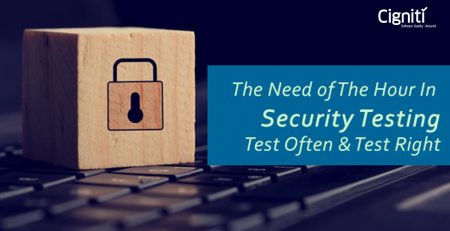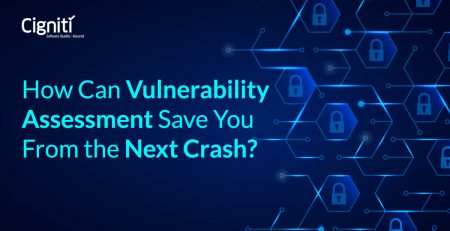Cybersecurity in Healthcare Sector: Robust Plan With Key Components
Intending to address issues related to the safety of Medical devices, the Food and Drug Administration (FDA) has announced plans to propose new frameworks to protect consumers and enhance medical device cybersecurity. It has released the Medical Device Safety Action Plan: Protecting Patients, Promoting Public Health, which outlines how the agency can work towards enhancing processes to ensure the safety of Medical devices. Safety of Healthcare applications and devices is a growing concern for the industry, especially with rapid digital transformation for better and personalized consumer experience. While rules and regulations get framed and implemented, how can the healthcare sector independently devise a robust Cybersecurity strategy?
The healthcare sector’s core objective and eternal plan is to help extend the services to every needy consumer and personalize the offerings as much as possible. Likewise, FDA Commissioner Scott Gottlieb, M.D., in his statement, mentioned, “We aim to make sure that the new advances in technology that are enabling better capabilities and benefits are also harnessed to bring added assurances of safety so that more patients can benefit from new devices and address unmet needs.” Safety and security of data and systems is critical, as any major breach can result in life-endangering situations.
State of Affairs of Cybersecurity in the Healthcare Sector
The Healthcare sector will continue to face security threats and data breach attacks. These attacks will be predominantly on the basic infrastructure, which can compromise consumer data and life-critical information. For instance, last year, the WannaCrya Ransomware attack almost damaged the U. K. National Health Service. Data breaches and even inaccessibility to patient data and records can be disastrous for healthcare operators.
Moreover, it is interesting to know that hackers are now waging an attack against EHR vendors, directly impacting the providers. This results in a breach and threatens the functioning of many organizations at a time. For instance, extended downtime and no access to patient records can impact the revenue, patient health, and healthcare system’s reputation. There have been instances where the service provider could not access its patient data for almost a week.
Ransomware, insider threats, and external hacks are some persistent threats the healthcare sector is bound to face. Amongst all these threats, insider threats are extremely threatening, where users are potentially responsible for significant losses to the organization. It is a major vulnerability regarding healthcare security, where human errors within the organization can cause a major breaches and losses.
Today, sensitive devices connected to the heart or the brain can be controlled digitally and remotely. What if a key to a device controlling the functioning of an organ is leaked, resulting in the manipulation of the device? It can almost result in death due to some malicious intentions. This might sound like a scene pulled out from a Television thriller series, but considering today’s digital revolution, this could hold true. Hence, healthcare solution providers must develop robust data security options to avoid such attacks against individuals.
It has been estimated by research bodies that an average healthcare data breach costs $380 per record. In fact, losses incurred from data breach in financial services is less than the losses in the healthcare segment. Data breaches can occur for many reasons– poorly maintained secured systems, machines, or inefficient data management practices. There are multiple reasons, but the outcome can have an everlasting impact on the organization.
Key components of your Security Testing strategy
Security Testing works in a defensive mode, where organizations must look at how to safeguard their systems against an attack, and even build an effective bounce back strategy to prepare for any situation. Let’s look at some critical aspects of Security Testing specifically for the Healthcare sector.
Safeguarding Healthcare information
The initial step in Security Testing is to check for vulnerabilities and identify potential risks to protected health information (PHI). Securing PHI further helps organizations to confirm that the application meets HIPAA Compliance. Strategic security testing can help organizations to safeguard sensitive healthcare information. Vulnerability Assessment forms a key component of the Security Testing strategy.
Effective Data Management
It’s not just about safeguarding data; Security Testing also helps ensure that your data storage and management techniques are good enough. Compelling Data Management techniques can go a long way to provide Data protection and bring down the risks associated with cybersecurity in healthcare sector. Security Testing also helps you analyze your security solution for data protection and management.
Ensuring safe Data Transmission
Healthcare applications and Medical devices support rigorous data exchange via emails, remote servers, Cloud, or devices. This data has to be protected or encrypted so that it is not compromised at any point during transmission. Effective Security Testing and Network security testing strategies can help organizations protect the data from leaking during transmission. It will save the data from unauthorized access, which is possible in a digital scenario.
Managing Access to Data and systems
Security gaps happen mainly when the access points are not defined, which makes the systems and applications highly vulnerable. Security Testing is needed to improve identity validation, which helps bring down the cybersecurity risks to a great extent. Healthcare institutes such as hospitals are expected to secure patient data and other key information points, which is possible with rigorous validation of access points and identification.
Check for software quality
Security Testing helps ensure the application’s quality before it is released by checking vulnerabilities and risks. It can diagnose bugs in the initial phases, which also brings down the efforts and costs. This further helps reduce time-to-market and enables teams to release the application confidently. Moreover, Security Testing is needed to attain HIPAA compliance, which is a stamp of approval for an application.
Due to the growing need to adopt new technologies for delivering improved consumer experience, healthcare solution providers face cybersecurity challenges in the healthcare sector. These challenges will only intensify as we move ahead and innovate. Security Testing and Digital Assurance will help enterprises reduce risks and create an effective bounce-back plan for securing sensitive information. What you need is a relevant strategy for your business.
Cigniti has a dedicated Security Testing Center of Excellence (TCoE) that has developed methodologies, processes, templates, checklists, and guidelines for web applications, software products, networks, and the cloud. Connect with us to build the right security testing strategy for your organization.





Leave a Reply